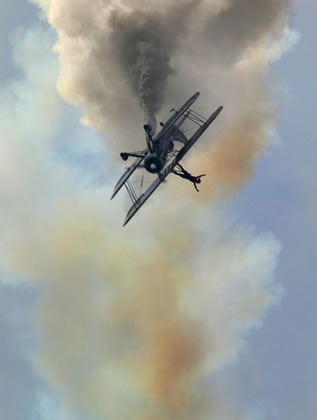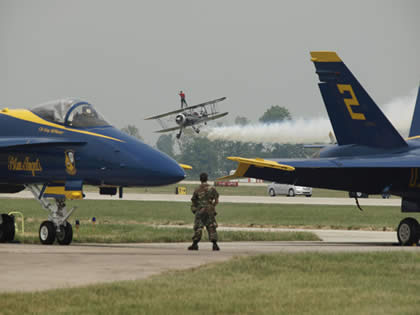 Olympus Visionary Larry C. Price is a two-time Pulitzer Prize winner, talked to Cinema Without Borders about using Olympus E-PL1 for shooting his documentaries. Larry is a long-time photojournalist and a photo editor at some of North America’s largest newspapers including the Philadelphia Inquirer, the Baltimore Sun, the Fort Worth Star-Telegram and the Denver Post.
Olympus Visionary Larry C. Price is a two-time Pulitzer Prize winner, talked to Cinema Without Borders about using Olympus E-PL1 for shooting his documentaries. Larry is a long-time photojournalist and a photo editor at some of North America’s largest newspapers including the Philadelphia Inquirer, the Baltimore Sun, the Fort Worth Star-Telegram and the Denver Post.
Price’s much-celebrated work has appeared in National Geographic, Time, Newsweek, U.S. News & World Report, LIFE and other national and international magazines and newspapers. Larry’s past corporate clients include IBM and HarperCollins.
Additionally, Price’s work has been honored by the Overseas Press Club, World Press Photo Awards, the Pan American Press Association, the National Press Photographers Association and the Society of News Design. He also has participated in 13 Day in the Life book projects, including the acclaimed Day in the Life of America and Day in the Life of Africa.
Today Price spends much of his time shooting with the Olympus E-3, the PEN family of cameras and his arsenal of Zuiko lenses. A fan of aviation and a trained pilot, Price recently strapped an E-PL1 to the wing of his prop plane and captured HD video of a daring wing walker.
Bijan Tehrani: Please tell us a little about your experience with making videos with the Olympus E-PL1. 
Larry Price: Well that particular camera is very new to me and I have only had it for a short period of time but I can tell you right now I really like it. I started using the E-P1 when it was first introduced in 2009. I have used most of the Olympus Pro bodies and their point and shoot bodies. I’m a photojournalist and enjoy variety in subject matter. I was always looking for a camera that I could walk with for long periods of time comfortably and carry a few lenses and still be minimal. So the Pen series was perfect for me. The lenses are very sharp and the equipment is small and very compact. It’s a very intuitive and very responsive body despite its small size. When I got the new EPL-1 it was even better. It’s really great for travel. The thing that I like about it for video experimentation is that it’s easy to put the camera in interesting and small places. I’m sort of an aviation aficionado and one of the first things I did with the camera was to put it on the wing of a place and take a picture of a wing walker. So you can really take this camera anywhere and I think that this is a draw to the consumer. The fact that you can take the camera anywhere is fundamentally what I like about the E-PL1.
BT: How did you like the overall video quality of Olympus E-PL1?
LP: The quality was great; I haven’t shot in 720 but only in 1080. Arguably the biggest monitor that I looked at footage on was my HD TV at home and the picture quality was beautiful. Like anything else you just have to learn how to use it. I just got the new 9-18mm zoom from Olympus that is designed specifically for silent focusing. So now I can manually focus or zoom without hearing any kind of internal noise on the soundtrack.
BT: What is the best way to cancel noise when focusing with the lens?
LP: Putting on the manual defiantly eliminates several issues but you just have to mindful of your aperture and depth of field. But the best approach it to use the Olympus EMA-1 microphone. It provides great sound  quality in a very tiny package and eliminates all camera and lens noise. I recently filmed at the Dayton Air Show, which is a huge, huge draw; it’s one of the largest air shows in the country and close to 100,000 people attends each year. I was concentrating on sights-and-sound shooting and I realized that the limitations of a small camera. Panning shots with a long lens at an air show is difficult because things are just moving so fast. But overall the camera worked really well, I was really happy with the video. The camera is much more capable than I am, especially when it comes to hand held. It’s just perfect for unobtrusive shooting.
quality in a very tiny package and eliminates all camera and lens noise. I recently filmed at the Dayton Air Show, which is a huge, huge draw; it’s one of the largest air shows in the country and close to 100,000 people attends each year. I was concentrating on sights-and-sound shooting and I realized that the limitations of a small camera. Panning shots with a long lens at an air show is difficult because things are just moving so fast. But overall the camera worked really well, I was really happy with the video. The camera is much more capable than I am, especially when it comes to hand held. It’s just perfect for unobtrusive shooting.
BT: How do you go about trying to fix the problems of light contrast?
LP: Well I can speak to that with experience; I made a little video for our website. I had a ride-along in a WWII bomber–a B-25. Typical of these opportunities, you can’t control things like light or flight time. We flew in the early afternoon so the contrast was off the charts. There was little scene in this video where the crew is involved in the flight briefing what took place under one wing. One of the things that I have always liked about Olympus cameras is their ability to deal with that contrast. With that scene I shot it on full auto and just let the camera do its thing. I didn’t move a lot and just tried to find a sort of mid-point; when I looked at video in the computer, I was amazed how well the E-PL1 handle the extreme contrast, Later on, when I was actually in the plane, that contrast was even worse, it was going from really dark shadows inside to bright scenes outside at high altitude. Again, letting the camera compensate gave me lots of good footage to work with.
BT: Can discuss in detail about the new lens?
LP: It’s virtually silent. You have to put your ear right to it to know if it’s even focusing. It is conceived and designed to eliminate the problem of sound that occurs with focusing. That being said, if you use auto focus you will see it jump focus a bit, especially in low-light situations. But I’ve seen that on The History Channel, so I guess you can’t get away with it completely. Like other cameras you got the whole audio-input issue.  Manufacturers are really limiting the number of accessories that come with the camera so you have to be inventive to solve little technical issues. Wind noise can be an issue outdoors so I made my own windscreen from a kitchen sponge. It looks a little odd but it works beautifully. The E-PL1 is fun and this camera has really got me back into the whole video thing again. The little project that I am working on now is photographing Orchids in the studio. I’m trying to figure out ways to incorporate some video and add some subtle movements. I’d like to add still, sound and video to produce multimedia piece to go along with the stills.
Manufacturers are really limiting the number of accessories that come with the camera so you have to be inventive to solve little technical issues. Wind noise can be an issue outdoors so I made my own windscreen from a kitchen sponge. It looks a little odd but it works beautifully. The E-PL1 is fun and this camera has really got me back into the whole video thing again. The little project that I am working on now is photographing Orchids in the studio. I’m trying to figure out ways to incorporate some video and add some subtle movements. I’d like to add still, sound and video to produce multimedia piece to go along with the stills.
BT: Do you know of any broadcast projects that are using this camera?
LP: I can’t say that I do, because the product is so new. The commercial Olympus produced last year about Pen video does point to the aesthetic quality that you can achieve with the cameras. It was fantastic. When I shot that B-25 film, I did a lot of shooting with an 8mm fisheye lens. When I experimented with movement at the air show it was obvious you really do need to pay attention to the steadiness of the camera. Again, hand control is more of a challenge, so I’m researching some sort of small Steadicam setup. The conundrum is that you buy a small, lightweight camera but once you put all of the accessories on it, the camera becomes huge. For me, it’s really about just using the right product for a specific job and working within the limitations of your gear. At the end of the day, it’s all fun anyway.

